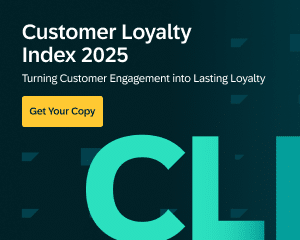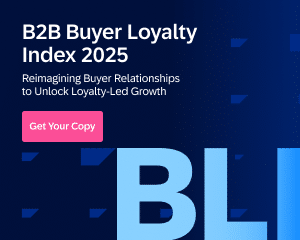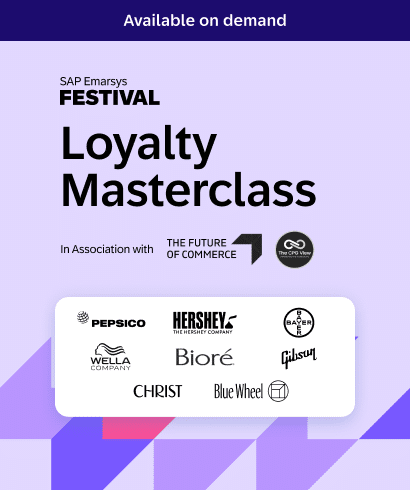Your customers check their email every day. Are your messages breaking through, or blending into the noise?
Today’s audiences expect more than generic promotions. They want emails that reflect their interests, behaviors, and place in the customer journey. But delivering that kind of relevance at scale is a growing challenge for marketing leaders — especially in an AI-driven world where speed and precision are now the baseline.
The upside? Brands that evolve their email strategies are seeing major returns. By combining data, creativity, and automation, they’re turning email into one of their most effective engagement tools.
This playbook shows how leading brands are doing it — and how you can, too.

Industry Snapshot: The State of Email Marketing
Email remains one of the most powerful tools in a marketer’s toolkit. It’s measurable, cost-effective, and rich with first-party data. Unlike paid channels, email is something you own, giving you direct access to your audience at scale.
But the inbox is more crowded than ever. If your emails don’t feel timely or relevant, they’re likely to be ignored. Today’s consumers expect a consistent, personalized experience that mirrors their real-time behavior, not a generic blast sent to everyone on a list.
To stay competitive, marketing teams need to shift from campaign-based thinking to experience-based execution. That means moving beyond basic segmentation and embracing automation, AI, and lifecycle-aware messaging.
The goal is to be delivering value in every message. Brands that do this well are building stronger relationships, increasing engagement, and driving measurable impact.
9 Email Marketing Best Practices That Drive Results
To compete in today’s inbox, email must evolve from static messages to dynamic experiences. These nine best practices show how leading brands are making that shift.
1. Deliver personalization that adapts to behavior
Personalization is table stakes in modern marketing. Customers expect brands to understand their needs and respond in real time. Static, one-size-fits-all emails can’t meet those expectations. By leveraging behavioral signals, brands can send messages that align with what customers are doing right now to boost relevance, engagement, and loyalty.
Goal: Make every email feel personally relevant.
How it works:
- Use real-time triggers like product views, cart adds, or purchase frequency.
- Populate emails dynamically based on individual browsing or buying behavior.
- Adjust language, layout, and offers to reflect profile preferences.
Tip: Don’t ask for everything at once. Instead, use progressive profiling to gather data gradually.
Example: A pet brand sends replenishment reminders tailored by breed, order history, and flavor preference.
2. Segment based on lifecycle, not just demographics
Traditional segmentation based on age, location, or job title misses the nuance of where someone is in their relationship with your brand. Lifecycle segmentation allows you to speak to current behavior and context, delivering more timely, effective communication from acquisition to re-engagement.
Goal: Target based on behavior and context, not just static data.
How it works:
- Segment by lifecycle stage: new lead, first-time buyer, loyalist, lapsed customer.
- Set thresholds for inactivity, engagement, and conversion goals.
- Automate updates as customer behavior evolves.
Tip: Revisit segment logic quarterly to reflect changing behaviors.
Example: A coffee subscription brand spots customers skipping deliveries and sends a “taste refresh” campaign with seasonal flavors.
3. Let AI drive smart segmentation and timing
AI brings a level of speed, scale, and precision that manual segmentation simply can’t match. It can surface hidden patterns in behavior, predict optimal send times, and dynamically adjust targeting strategies, all without guesswork.
Goal: Boost performance through intelligent automation.
How it works:
- Predict the best send time for each user.
- Suppress disengaged segments and focus on high-intent recipients.
- Auto-generate segments from real-time trends and purchase behavior.
Tip: Periodically test AI-driven targeting against manual segments to optimize performance.
Example: A global footwear brand uses AI to analyze browsing patterns and predict purchase intent across categories. When a customer shows increased interest in trail running shoes but hasn’t converted, AI adjusts their email flow to prioritize product education, reviews, and back-in-stock alerts for that category.
4. Build emotional resonance through content and design
Emotional resonance turns transactional messages into meaningful moments by using storytelling, visual identity, and brand voice to connect with customers on a deeper level. When emails evoke a feeling rather than just pushing a product, they become more memorable, shareable, and impactful.
Goal: Strengthen recall, engagement, and brand affinity.
How it works:
- Anchor campaigns in customer values or goals.
- Use emotionally evocative design, copy, and storytelling.
- Ensure visual and tonal consistency across campaigns.
Tip: Use frameworks like PACT (Personal, Actionable, Contextual, Timely) to guide your messaging.
Example: A travel brand sparks wanderlust with immersive images and copy like “Find your next breath of fresh air.”

5. Make email part of a connected journey
Email is just one touchpoint in a broader customer journey. When integrated with other channels like SMS, mobile apps, and your website, email reinforces your messaging and moves customers seamlessly from interest to action. Think about orchestrating a consistent, connected experience.
Goal: Deliver seamless, consistent experiences across channels.
How it works:
- Link email triggers to SMS, push, and web overlays.
- Create journey flows from acquisition to reactivation.
- Sync messaging and creative across touchpoints.
Tip: Use web channels to personalize site content for users who clicked but didn’t convert.
Example: A fashion brand sends an abandoned cart email, then shows a discount for that item on the homepage during the next visit.
6. Turn your data into marketing firepower
Scattered or siloed data slows down your ability to act. A unified view of the customer across e-commerce, CRM, loyalty, and engagement platforms lets you personalize messaging, automate intelligently, and make smarter decisions.
Goal: Power smarter targeting and automation with connected data.
How it works:
- Integrate e-commerce, CRM, loyalty, and web analytics into one platform.
- Use this view to trigger automation and personalize product blocks.
- Ensure data consistency across channels and reporting.
Tip: Make sure your email service provider (ESP) supports relational data and dynamic fields.
Example: A luxury accessories brand customizes emails with care instructions based on past purchases.
7. Orchestrate omnichannel experiences
Whether customers are browsing on mobile, shopping in-store, or clicking through an email, the experience should feel cohesive and intentional. Omnichannel orchestration ensures that every message contributes to the same larger journey, regardless of where it’s delivered.
Goal: Guide customers seamlessly across their preferred touchpoints.
How it works:
- Map lifecycle journeys and their key channels.
- Connect execution across email, mobile, social, and in-store systems.
- Automate cross-channel responses to customer behavior.
Tip: Use cross-channel engagement scores to refine targeting.
Example: A lifestyle brand sends a loyalty birthday email, follows with an SMS reminder, and enables redemption in the mobile wallet.
8. Automate with purpose
When designed thoughtfully, automated journeys react to real customer behaviors in real time, creating moments that feel timely and personal. The key is intentionality: every automated message should serve a purpose and support a broader lifecycle strategy.
Goal: React to customer behavior with relevant, real-time communication.
How it works:
- Build flows around lifecycle moments: welcome, reorder, review.
- Trigger based on behaviors like tier upgrades or support resolution.
- Use AI to fine-tune timing and content.
Tip: Audit automations biannually to ensure they stay current.
Example: A wellness brand sends a reorder prompt three days before the customer typically restocks, and follows up with a loyalty points offer if the prompt is unopened.
9. Experiment, learn, and evolve
Even the best strategies lose impact over time. That’s why continuous testing is essential to keeping your email program relevant and high-performing. From subject lines and send times to creative and segmentation, experimentation helps you understand what resonates.
Goal: Improve performance through iterative experimentation.
How it works:
- Form hypotheses tied to real goals (e.g., increase CTR or AOV).
- Run A/B or multivariate tests on content, timing, and segmentation.
- Track downstream impact, not just opens or clicks.
Tip: Maintain a testing journal to document results and apply learnings.
Example: A subscription brand tests two versions of a win-back email for inactive customers: one offering a discount and another highlighting new features and product improvements.
Real-World Examples: How Leading Brands Bring These Practices to Life
These brands are turning strategy into execution—and proving that email still drives impact when built with intelligence and intent.
Estée Lauder: Evoking Emotion Through Email and Experience

Estée Lauder Companies is a global beauty leader known for iconic brands like MAC, Clinique, and Jo Malone. They are recognized for blending product innovation with luxury storytelling.
Challenge: With rising competition and inbox saturation, Estée Lauder needed to create emotionally engaging campaigns that stood out and built long-term brand affinity.
Solution: Estée Lauder combined neuroscience insights with luxury storytelling to trigger emotional responses in their email campaigns. CRM programs are personalized with sensory cues, aesthetic visuals, and messaging tied to identity and aspiration. By pairing emotional themes with segmented lists and dynamic content blocks, Estée Lauder increased the emotional impact of each message.
Their emails were integrated into a larger customer journey that included on-site diagnostics, loyalty messaging, and high-touch in-store experiences..
Results: Stronger brand recall and improved emotional resonance with subscribers across touchpoints.
Learn more about how Estée Lauder created emotional experiences for customers.
Belstaff: Turning Brand Heritage into High-Performing Campaigns

Belstaff is a British heritage brand known for its motorcycle-inspired outerwear. With a century of history, the brand reinvented its digital strategy to remain relevant.
Challenge: Belstaff needed to evolve its email program to appeal to both long-time loyalists and a younger, digitally native audience.
Solution: Belstaff restructured its CRM strategy around curated content and compelling visual design. They introduced a modular email template system that allows for seasonal and editorial flexibility while maintaining brand consistency. Monthly editorial brainstorms drive campaign storytelling, and content is linked to a two-tier loyalty program offering exclusive member benefits.
This approach keeps messaging agile, emotionally relevant, and personalized by audience cohort and engagement history.
Results: 10% YoY increase in repeat purchases among loyalty members and improved email engagement driven by editorial-style content.
Wella: Personalization at Scale with Automation

Wella Company is a global leader in haircare and color products, with a strong B2B and consumer presence across markets.
Challenge: Wella needed a way to personalize at scale across loyalty members, professionals, and retail consumers.
Solution: Using SAP Emarsys, Wella mapped out distinct CRM tracks for key segments, integrating loyalty programs, product education, and event invitations into dynamic email automations. Each stream leverages behavior triggers — such as purchase cadence or loyalty tier upgrade — to personalize recommendations, learning content, and promotional offers.
Results: Increased campaign efficiency and engagement across channels and enhanced loyalty participation through tailored CRM programs.
Learn more about how Wella drove personalization with SAP Emarsys.
What’s Next for Email Marketing?
The future of email is dynamic, intelligent, and hyper-personalized.
Look for:
- Real-time content that adjusts as customers engage.
- Natural language optimization for subject lines and body copy.
- Deep loyalty and e-commerce integration showing live offers and balances.
To stay competitive, marketers must embrace AI, automation, and connected data. SAP Emarsys gives you the platform to do just that, turning insight into action and emails into outcomes.
Ready to put these best practices into action?
Request a demo and see how SAP Emarsys helps you personalize, automate, and scale high-performing email strategies.







